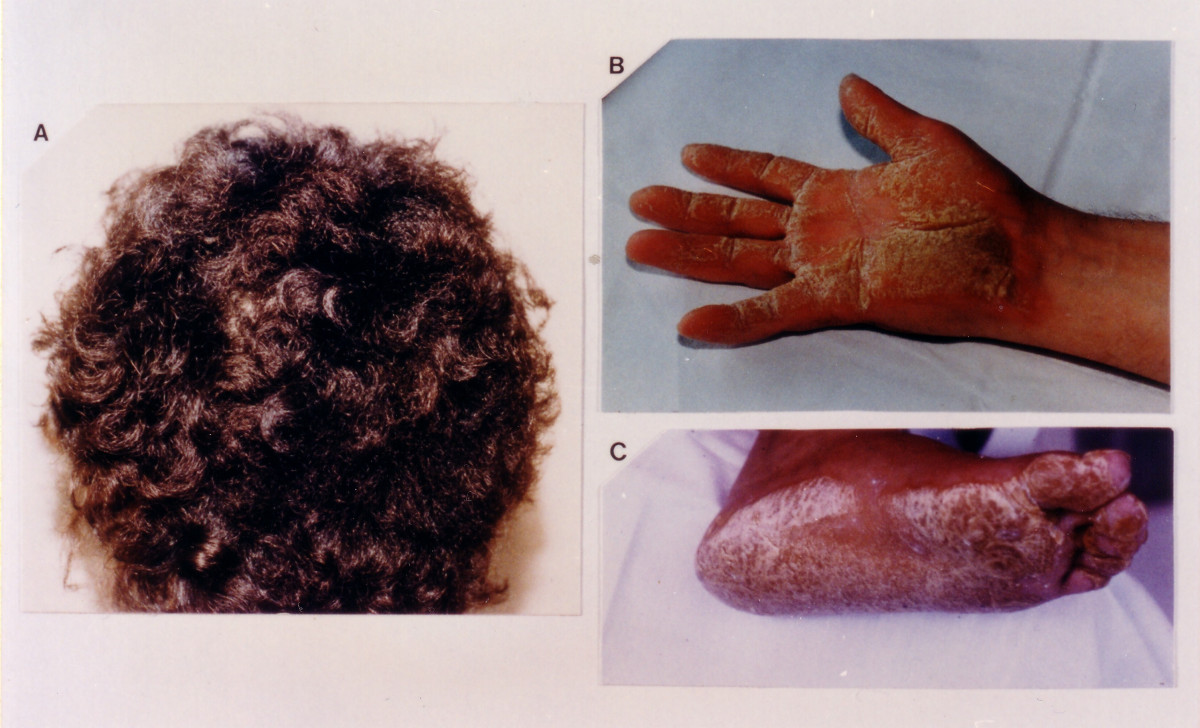Naxos Disease

A recessively inherited condition with arrhythmogenic right ventricular dysplasia/cardiomyopathy (ARVD/C) and a cutaneous phenotype, characterised by peculiar woolly hair and palmoplantar keratoderma.
Epidemiology
Naxos was first described in families originating from the Greek island of Naxos. Moreover, affected families have been identified in other Aegean islands, Turkey, Israel and Saudi Arabia. A syndrome with the same cutaneous phenotype and predominantly left ventricular involvement has been described in families from India and Ecuador (Carvajal syndrome, see this term).
Clinical description
Woolly hair appears from birth, palmoplantar keratoderma develop during the first year of life and cardiomyopathy is clinically manifested by adolescence with 100% penetrance. Patients present with syncope, sustained ventricular tachycardia or sudden death. Symptoms of right heart failure appear during the end stages of the disease. In the Carvajal variant the cardiomyopathy is clinically manifested during childhood leading more frequently to heart failure.
Etiology
Mutations in the genes encoding the desmosomal proteins plakoglobin and desmoplakin have been identified as the cause of Naxos disease. Defects in the linking sites of these proteins can interrupt the contiguous chain of cell adhesion, particularly under conditions of increased mechanical stress or stretch, leading to cell death, progressive loss of myocardium and fibro-fatty replacement.
Genetic counseling
The disease is transmitted autosomal recessively.
Management and treatment
Implantation of an automatic cardioverter defibrillator is indicated for prevention of sudden cardiac death. Antiarrhythmic drugs are used for preventing recurrences of episodes of sustained ventricular tachycardia and classical pharmacological treatment for congestive heart failure, while heart transplantation is considered at the end stages.